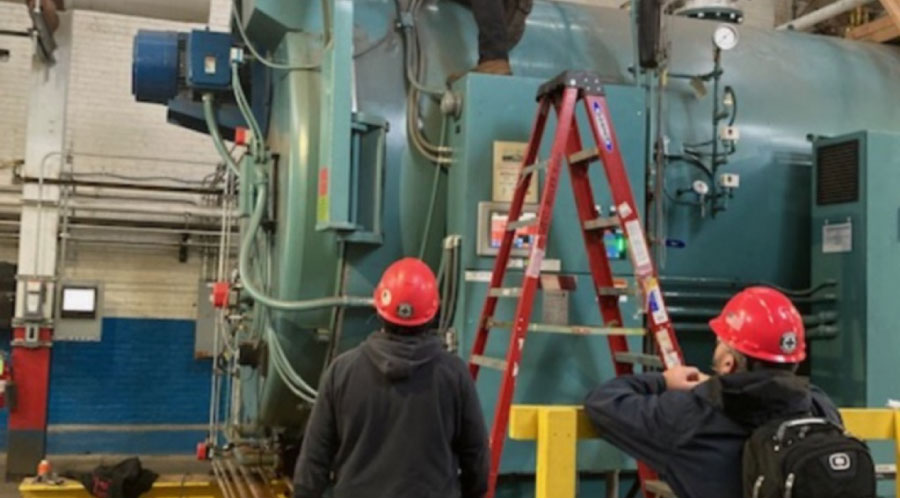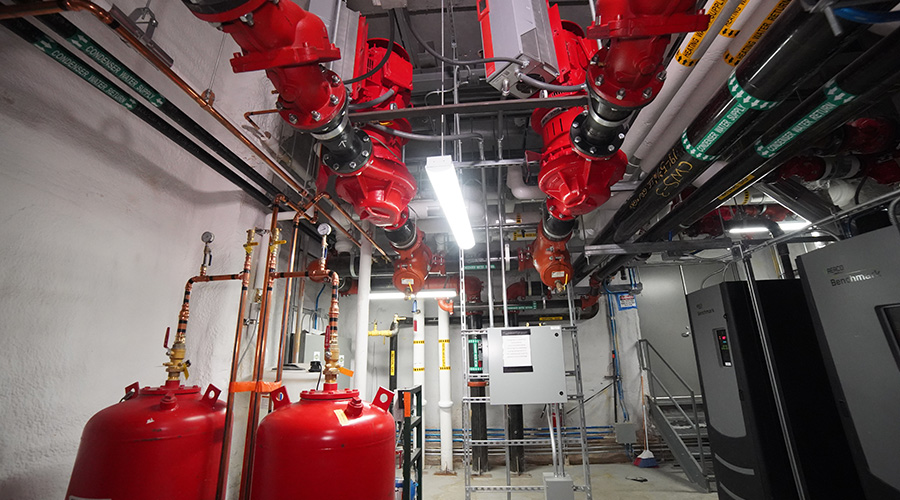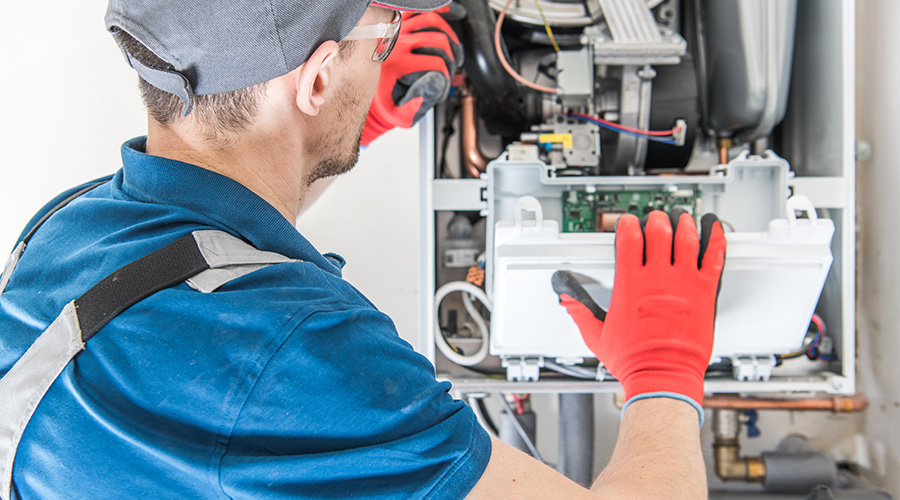HVAC
Putting New Technologies To Work
New building HVAC systems and equipment incorporating new technology have become available over the past 10 years. These components have many of the tools needed to improve HVAC system performance and reliability while reducing energy use. They are proven technologies, yet they have been slow in making inroads in facilities. The result is that many facilities miss opportunities to improve operations and energy efficiency.
There is a natural reluctance on the part of facility executives to commit to something so new that a facility would be the first to use it. Being the first is high risk, and nobody wants to make the $100,000 mistake by investing in something that is untried. Similarly, nobody wants to be the first to use something so exotic that it cannot be maintained.
That makes sense. But there are many newer technologies being promoted for building HVAC systems that are neither high risk nor exotic. They have been applied and tested in facilities, in some cases for as long as 10 years. Consider technologies such as variable speed drives for pumps, fans and drives; high efficiency chillers and boilers; and microprocessor-based control systems — all make use of new technologies. Many facility executives consider these and other technologies new and look at them with skepticism only because they have not been tried before in their own facilities.
Another obstacle to the wider use of new HVAC technology is cost. Many of the new technologies carry a premium price. High efficiency chillers and boilers typically cost 15 to 25 percent more. Variable speed controls for pumps, fans and drives typically increase total system cost by up to 10 percent. With limited budgets and pressure to keep first costs low, these items are frequently excluded even though they can reduce operating costs.
Tunnel vision is another problem. Each member of the project team is responsible for a particular area. Seldom does anyone step back and ask if what they are doing makes sense or if there are better alternatives. It is simply too easy to keep doing what has been done in the past — the cookie cutter approach to building HVAC systems. But just because one type of system has always been used in a particular facility is no indication that it is the best solution for that application. Nor is the opposite true, that new technology is always better. Whether the technology is old or new, the key for the facility executive is to compare the needs and capabilities of the facility to the HVAC system or component being installed .
What works well in one facility may be totally inappropriate for another. There are simply too many differences between facility operations to have universal solutions. Services provided, HVAC system requirements, personnel availability, training issues — all will have an impact on the selection process for HVAC technology. The most advanced building automation system will be of little value to a facility if its operation cannot be supported by facility personnel.
Evaluating New Technologies
When evaluating a new HVAC technology, consider the rate of return on the investment in that technology. While new technology systems and components are typically more expensive than conventional units, one of their strongest selling points is their improved operating efficiency. If only first costs are considered, the long-term benefits of reduced energy requirements will be lost. And these savings can be significant.
Consider the typical HVAC system motor application. The Energy Policy Act of 1992 set minimum efficiency standards for the type and size of motors commonly found in HVAC systems. The increase in efficiency ranged from 2 to 6 percent, depending on the size of the motor, compared to motors that were being used at that time. Although a 2 to 6 percent efficiency increase might not seem significant, consider that the cost of energy used by a typical HVAC system motor in one year is about 10 times the cost of the motor. Replacing existing motors with high efficiency models instead of rewinding them will provide a very rapid payback. Similarly, installing premium efficiency motors that exceed the minimum standards will also cost more, but will provide additional energy savings.
To effectively evaluate new HVAC technology options, a cost analysis must identify the energy savings, the payback and the rate of return on the investment. By simply considering first costs, facility executives will miss many opportunities to improve operating efficiency.
Enhanced Capabilities
While reduced energy cost is often cited for using new HVAC technology, systems today also offer capabilities that are difficult or impossible to perform with older systems.
Consider the capabilities of the new generation of digital boiler control systems. In addition to providing more efficient operation, the control systems offer remote monitoring capabilities, allowing operators to monitor and modify the operation of boilers from practically anywhere.
Safety is enhanced through the constant monitoring of a wide range of operating parameters. Even system reliability is enhanced. By closely monitoring and recording operating parameters, operators can identify trends that indicate a need for maintenance.
This same enhancement in system operation takes place in practically all new HVAC system technologies on the market today. The result is that facility executives are better aware of what is going on in their facilities, can better meet the needs of occupants, and can respond more quickly to or even anticipate maintenance needs, improving system reliability.
Flexibility
Another area where new HVAC system technology can benefit facility operations is increased flexibility. HVAC systems are designed to meet specific requirements that were identified early in the design or renovation process; most HVAC systems are designed with a minimum service life of 20 years. But facilities are not static. Occupants change. The functions performed in the facility change. The facility space itself changes. The result is that modifications have to be made, modifications that will be a compromise between cost and performance.
Many of today’s new HVAC technologies reduce the difficulty of meeting both today’s and tomorrow’s needs effectively and efficiently by providing a greater degree of flexibility than was available before. For instance, central chillers with variable frequency drives can effectively change system capacity without sacrificing performance or efficiency. Another example is distribution systems where changes in space layout do not require costly relocation of ductwork. A third case in point: control systems where simple programming changes, not hardware replacement, can modify system operation to meet new requirements.
Despite the benefits and capabilities of new HVAC technologies, to be effective they must be compatible with facility needs. Even the most technologically advanced system will not be of much value if it cannot be used effectively.
When considering investing in new HVAC technology, start with a detailed examination of the facility. Identify the HVAC needs of the facility and how those needs could be better addressed, then select the system most appropriate for that application.
If the goal is to reduce energy costs, identify systems and components that will provide the greatest impact. It is impossible in many applications to upgrade all components at once simply because of the size of the facility and the cost and disruption of the upgrade process. Lay out an implementation plan, starting with the high priority and high payback items.
James Piper is a consultant and writer with more than 25 years experience in the facilities field.
Underfloor Air Distribution Systems
One example of new HVAC technology that is often overlooked is underfloor air distribution systems. Traditional distribution systems make use of space above the ceiling to run ductwork and to install terminal units. Components are installed early in the construction process before the interior finishes.
While installation is straightforward, modifications can be difficult. When space layout changes or if the HVAC requirements in a particular area change, it is difficult, disruptive and costly to rework the distribution system to match those changed needs. Maintenance is difficult at best, as maintenance crews must attempt to access equipment above the ceiling.
Underfloor air distribution eliminates many of the difficulties associated with overhead systems. With underfloor systems, there is no ductwork to relocate every time a change is made to the space. All that is required is relocating the grills. Air flow and temperature are more easily controlled by the occupants. Equipment can be easily accessed for maintenance. Underfloor systems also allow installation of flexible underfloor power and telecommunications systems.
Related Topics:











